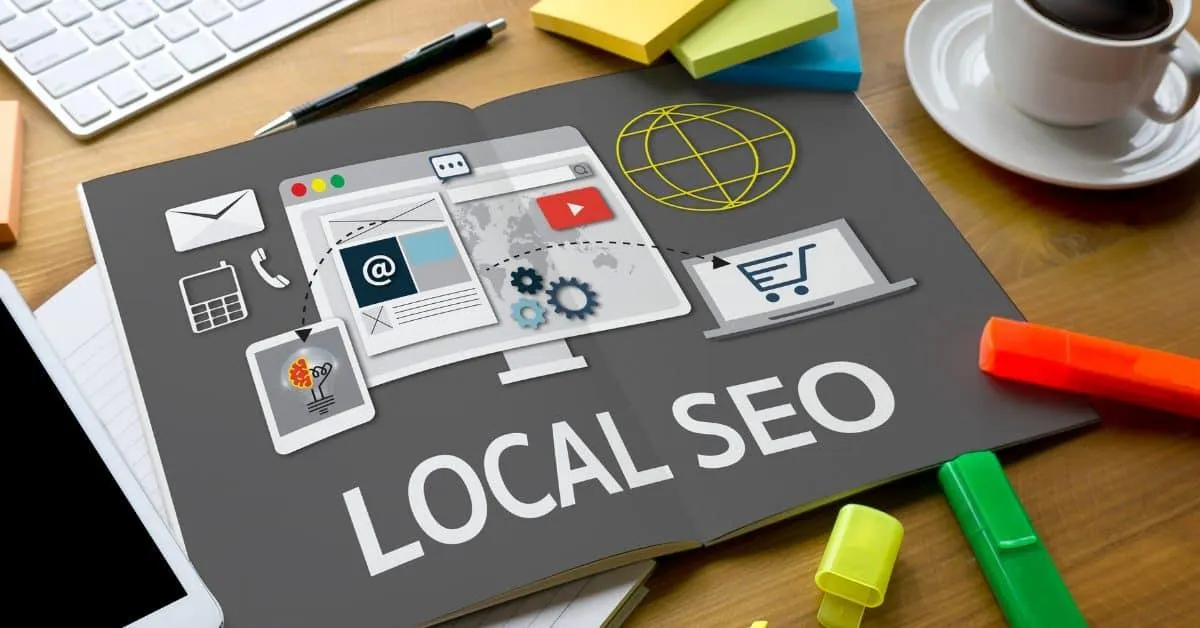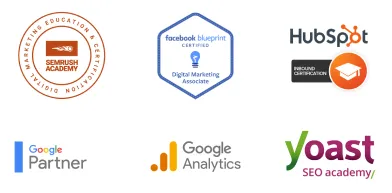TO LEARN IS TO GROW
Learning Center
We do our research and publish our results. Should probably call this the Growing Center.


How Is Local SEO Different From Regular SEO?
Is there a big difference between local SEO vs. regular SEO? It’s probably more accurate to say that local SEO is a more specialized aspect of search engine optimization: one you should take advantage of as a small business, in parallel with your regular SEO efforts.
Local SEO vs Regular SEO, is there a difference? If so, what are the differences? How do these differences affect one’s approach to digital marketing? Will it be helpful for my business? These are the pertinent questions that bug many business owners’ minds.
If you have done any form of digital marketing, there is a great chance that you have heard about SEO. SEO or search engine optimization is the process of increasing the traffic to your website through the use of organic search engine results.
If that seems to be confusing, let us illustrate.
After work, you get in your car and decide that you don’t feel like cooking your dinner. So you whip out your phone, open a search engine like Google or Firefox, and type “Best places to eat dinner near me.” Those restaurants which appear on top of the first page of your search engine have great SEO. As such, the searcher will most probably click through these results and be directed to the websites listed first. By ensuring the website’s spot in the top results, traffic to the website is also assured.
Local SEO versus Regular SEO
SEO is not as simple as you think. Millions of companies and businesses want to earn the top spot in the results field. It is a highly coveted space. However, knowing how to manage SEO is a good way to secure a spot. One important aspect of SEO is the differentiation of Local and Regular SEO.
Local and regular SEO do not vary in terms of its goal, which is to improve your ranking in online searches so that more people can find your business. However, there is a difference when it comes to the scale.
Regular SEO improves your ranking on a broader scale – meaning, national or global. It allows your website to appear in the top results wherever the searcher is on the globe. For instance, a business such as Nike for running shoes will surely prioritize regular SEO when it comes to digital marketing.
Local SEO, on the other hand, gives priority to the local search territory. Going back to our example above, “Best places to eat dinner near me,” it is a type of search that heavily focuses on local SEO. Brick-and-mortar restaurants in the area of the searcher will have to prioritize local SEO to appear in the top results.
The question is not always, “Which is better: Local or Regular SEO?”. Rather, it should be, “Which one is better for my business?”
The Three Main Ranking Factors For Regular SEO
There are more than 200 ranking factors that come into play when Google tries to figure out how a particular website (or web page) shows up on search results.
(Again, it’s important to note that no one outside of Google’s innermost inner circles knows what the search algorithm’s secret sauce is.)
But we do know that the top three ranking factors– the three most important that determines our position in search results– are:
Your backlink profile. More high-quality links pointing to our site has always been key to the way Google determines which site (or web page) is better.
Your content. High-quality (i.e. helpful, market-relevant, and comprehensive) content always wins.
Rankbrain. Google has an A.I./Machine Learning component to its algorithm to determine a lot of things– the overall user experience on a site, context, and search intent, among others.
Bringing in organic traffic has always been a challenge for many brands and organizations. Regular SEO continues to be highly competitive, with some industries even more cutthroat than others.
Top Ranking Factors For Local SEO
Local SEO comes into play when somebody looks for businesses targeting a certain location. This is the main difference between local SEO and regular SEO: simply put, local SEO has a geographical component.
Through smartphones and digital assistants, we’ve been seeing a lot more local searches (e.g., roofing contactors near me) and a lot more voice searches.
A different bunch of ranking factors additionally come into play:
Your Google My Business listing. Make it easy for Google to provide vital business information to those looking for brands like yours online.
Your inbound links. Remember, backlinks are seen as a “vote” for you online. It’s as much about quality as it is about quantity too.
Your NAP information. Your business name, address, and phone number shouldn’t only be prominently up on your site. It should also be consistent across all your business listings, social media, and other mentions online.
Your citations. Having citations or business listings show folks that, yes, you are a legitimate business, you’re recognized within your industry, and that you’re part of a larger community.
Your reviews. Another way to show you’re for real is through reviews and testimonials from your clients and customers.
Your behavioral signals. Google is now able to track activity across your site: from people clicking on your phone number or scrolling through your products and services, or bouncing out to check out a competitor’s site.
Your social signals. Although not as important, your activity on social media also plays a part in helping you better rank on local results.
With Local SEO, you can rank well for local searches even when you’re not a big established brand or have a lot of resources to keep creating content.
Essentially, Google recognizes that you are part of the neighborhood, the community, and the industry. That you do have regular customers and how these all help build your credibility and overall trust.
Note: We have to point out that it’s not an either-or scenario. You should be working on both your regular SEO and your local SEO. Having good regular SEO helps boost your local SEO and vice versa.
7 Tips to Radically Boost Your Local Rankings
Now that you have a better idea on what the difference is between local SEO and regular SEO, we can now focus on the top local ranking factors mentioned above, and work our way towards being more visible online (at least as far as local searches go).

Once you’ve claimed your location in GMB, Google will then send you a confirmation email. Please, for the love of local SEO, do not forget to click confirm to set up your listing.
1. Claim Your Google My Business Listing
The first thing on your to-do list if you want to improve your local SEO ranking is to claim your Google My Business (GMB) listing.
Without a GMB listing, you won’t appear on the search list and you will lose your place in the local pack.
If possible, put details on all the fields provided by Google including your registered business name, phone number, email address, operating hours, complete location address, and most importantly, a short and concise description of your business — these details will affect how users will see your brand.
Picture this, if you are searching for a book shop near your place and you are specifically looking for stores that carry political commentary books. One listing just says it’s a bookshop while the other mentions all genres it carries including political commentary books, which one are you checking out first?
Think of Google My Business listing like claiming a username on Instagram, it will be harder for you to claim a location when somebody claimed it already so be quick and act on your toes today.

2. Link Relevant Websites To Your Content
Similar to generic SEO, handing out relevant links from quality sites is a great way to establish your website as a resource page and build credibility in your niche.
Remember to link pages that make sense to your content to give a quality user experience and gain more traffic.
Remember: search engines ultimately want users to find the information they are looking for. And so external links provide important clues about the relevance of a page, and this is extremely helpful for search engines.
Pro Tip: Avoid linking pages from competitors.
3. Complete Your On-Page Optimization
The three core elements in on-page optimization is called the “NAP”, which stands for name, address, and phone number. Users need to know your brand, your location, and your contact number at first glance. NAP should be clickable to make it easy for users to connect to you.

Having consistent NAP information: business name, business address, and business phone number helps make it easier for customers to get in touch with you.
4. Network With Listing Sites For Citations
Listing sites are the yellow pages of the digital era, they exist solely to drive traffic to your store. Connect to all listing sites related to your brand and provide them with your complete details, including the brand’s name, local address, phone number, website, and photos.
Make sure that the details you provided to the listing are the same on your website and GMB listing. Google uses information from listing sites to verify the details you provided in your Google My Business listing, any inconsistencies found can lower your rank.
Check for duplicate listings and request to have it removed to sync all traffic to your official listings.
Make it a habit to update your listing information, especially the operating hours and phone number to avoid missing out on potential customers that contacted an old number or visited during closed hours.
5. Encourage Customers To Leave Reviews
Online reviews make or break local businesses, there we said it. The bad news is that people, in general, are more likely to give negative reviews than positive ones. When we have a bad experience, we want to tell people about it because we are angry. Whereas we expect good experiences for products or services that we pay for anyway, and it totally makes sense. The good news is that there are strategies to encourage customers to leave keyword-rich reviews.
Pro tip: Whitespark has a free Google Review link generator where customers can easily link and post a review.

6. Improve User Experience On Your Website
Part of Google’s ranking criteria is user experience — how users engage and interact with your website, as it considers such factors as page speed, mobile responsiveness, menu/header layout, and URL structure.
UX design has a direct and powerful impact on your SEO rankings through the various metrics that search engines use to track user engagement.
If your listing is not getting clicks for whatever reason– your site loads slowly, it’s difficult to press buttons, or your fonts are too hard to read– it will rank lower in the search results.
7. Get To Know Your Buyer Persona
When you have a clear idea of your buyer’s persona, your listing will speak to them. On-page optimization plays a big role in Google’s algorithm in relation to user personalities. Google suggests listing that the AI machine thinks fit the user’s profile, interest, and needs.
For example, if I type “restaurants near me” Google will suggest the nearest restaurant within my radius, that is why the details in the listing should be correct and accurate.
Which One is Better For Your Business Needs?
As mentioned, the better question to ask is which one is better for your business. Here are some pointers for determining which is best suited for you. A good rule of thumb is always to ask yourself what the vision of the business is. Does your business cater to a local community? Does your business provide online solutions to multiple locations?
Businesses with physical stores in specific locations need to prioritize local SEO. Searchers that need access or information to these specific store locations are likely to visit within the next 24 hours from the search. If you are a restaurant or a specialty shop, it is an absolute must for you to appear in the top local searches.
On the other hand, e-commerce-only online shops or companies who prefer to keep their contact information private won’t do so well on local SEO, but can divert all their time and energy into conventional SEO instead.
Remember: it’s not a case of either-or. The truth is: you should be working on both your regular SEO and your local SEO. Having good regular SEO helps boost your local SEO and vice versa.

A Final Word
The truth is, local SEO isn’t that much different from conventional SEO. It’s just search engine optimization with a more local intent.
Local businesses of all kinds– lawyers, doctors, plumbers, restaurants, etc.– can all benefit by putting a little extra effort into local SEO.
Knowing the tools in digital marketing is crucial in making your business succeed. We, at LOJO Marketing, recognize that it can be difficult, especially for business owners, without the aptitude for navigating the online space and leveraging it for their businesses.
If you are interested in learning more about SEO as well as how your specific website is performing in the eyes of the search engines; we are here to help. As a complementary service, we provide an audit of your website with actionable tips on what needs to be done. All it takes is your name, website URL, and email address and we will get to work on your very own personalized SEO report. Click the button below to get started!
Built for Growth. Backed by 25 Years of Trust.
For over two decades, LOJO has been a trusted partner to hundreds of businesses just like yours. Whether working directly with owners, managers, teams, or boards of directors, our goal remains the same: to be a reliable and results-driven asset to your business.
Over the years, we’ve carefully built a team of experts—each selected for their unique skills, strengths, and personalities. Our clients choose LOJO because they know we genuinely care about their success.
And after 25 years of helping businesses grow, we’re more committed than ever.



Built for Growth. Backed by 25 Years of Trust.
For over two decades, LOJO has been a trusted partner to hundreds of businesses just like yours. Whether working directly with owners, managers, teams, or boards of directors, our goal remains the same: to be a reliable and results-driven asset to your business.
Over the years, we’ve carefully built a team of experts—each selected for their unique skills, strengths, and personalities. Our clients choose LOJO because they know we genuinely care about their success.
And after 25 years of helping businesses grow, we’re more committed than ever.




Matthew Rogers, President
iProspect Check
After spending several months reviewing multiple proposals from several different companies we engaged LOJO to develop a new website that represents our company effectively. We worked initially with Stephen Platte who helped create the scope of the project. Stephen was knowledgeable and always followed up with me on time and as promised.
He "closed the deal" for LOJO with his professionalism, service orientation and easy going approach. Once we signed the contract we were introduced to Jay Kelly who would be the creative lead for LOJO. This was the most challenging part of the project for my company, as there was no shortage of ideas from our side. Jay managed the project flawlessly, and once we had all agreed to the design, Jay introduced us to Eric.
Eric Lay is one of the founders of LOJO. Eric took the design we had developed and brought it to life. We delivered content as quickly as he requested it. Eric kept the project on task and we responded by exceeding every deadline for content. In turn, once provided, literally not a day went by that Eric didn't add the content and take the next step. In just a few weeks we launched our new website. Eric is a pleasure to work with.
His positive attitude and consultative approach really enhanced the experience and made a big difference for us in the outcome of our project. We would welcome you to visit our website to take a look at the quality work of LOJO. We are very pleased with LOJO and look forward to working with them in the future as we pursue an aggressive SEO strategy."
After spending several months reviewing multiple proposals from several different companies we engaged LOJO to develop a new website that represents our company effectively. We worked initially with Stephen Platte who helped create the scope of the project. Stephen was knowledgeable and always followed up with me on time and as promised.
He "closed the deal" for LOJO with his professionalism, service orientation and easy going approach. Once we signed the contract we were introduced to Jay Kelly who would be the creative lead for LOJO. This was the most challenging part of the project for my company, as there was no shortage of ideas from our side. Jay managed the project flawlessly, and once we had all agreed to the design, Jay introduced us to Eric.
Eric Lay is one of the founders of LOJO. Eric took the design we had developed and brought it to life. We delivered content as quickly as he requested it. Eric kept the project on task and we responded by exceeding every deadline for content. In turn, once provided, literally not a day went by that Eric didn't add the content and take the next step. In just a few weeks we launched our new website. Eric is a pleasure to work with.
His positive attitude and consultative approach really enhanced the experience and made a big difference for us in the outcome of our project. We would welcome you to visit our website to take a look at the quality work of LOJO. We are very pleased with LOJO and look forward to working with them in the future as we pursue an aggressive SEO strategy."

Matthew Rogers, President
iProspect Check
The team at LOJO were wonderful to work with. They are well organized and very patient as we worked through our marketing strategy and developed a well thought out and clear action plan at a reasonable price. We will definitely be back for our future campaign needs."

Jon Crosby, Founder
Dazil

